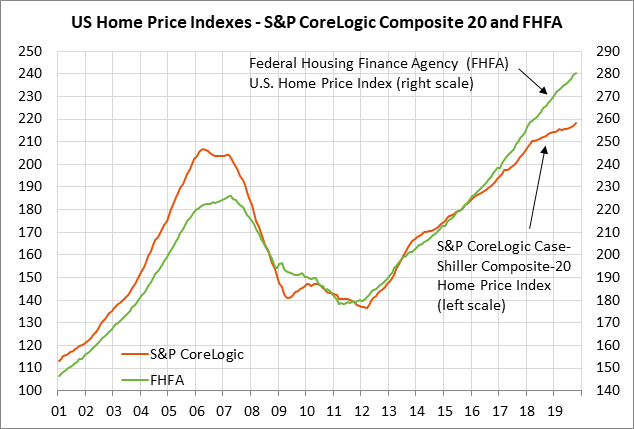- President Trump renews his European auto tariff threat by saying there is a new deadline
- Wuhan virus sparks market reactions
- U.S. existing home sales expected to show a modest increase
- U.S. home prices expected to continue higher
President Trump renews his European auto tariff threat by saying there is a new deadline — President Trump on Tuesday in Davos said that he wants a “big trade deal” with the EU. He said, “A deal between ourselves and essentially Europe is something we all want to be able to make.”
However, Mr. Trump went on to revive his threat to slap tariffs on European autos. Mr. Trump told the Wall Street Journal, “They know that I’m going to put tariffs on them if they don’t make a deal that’s a fair deal.” When asked about a deadline, he said, “They know what the deadline is,” and he indicated that he would reveal it publicly soon. President Trump let last November’s deadline for auto tariffs quietly lapse without any comment, perhaps wanting to put Europe on the back-burner while the Trump administration in November and early December finalized the phase-one trade deal with China.
The fact that Mr. Trump is now referring to a new deadline for a European auto tariff suggests that Europe will be Mr. Trump’s main target on trade this year during the presidential campaign season. It remains to be seen whether Mr. Trump would risk upsetting the stock market during campaign season with a tariff on European autos, which would likely cause a significant hit to global auto and auto-related stocks. The U.S. and European manufacturing sectors are already in a recession and would likely remain in a recession this year if President Trump were to slap a 25% tariff on European autos.
On the brighter side for US/European trade, President Trump on Tuesday said he is very happy with the deal he made on Monday with French President Macron to avert U.S. tariffs as retaliation for France’s 3% digital tax. Mr. Trump on Tuesday said, “We had a very good conversation, it worked out very well, the U.S. is very happy with the result and we appreciate very much what President Macron did.”
There has been no confirmation of exactly what the U.S. and France agreed to, but there are reports that France may have agreed to delay its collection in April of the digital tax in return for a U.S. promise not to proceed with its threat of tariffs of up to 100% on $2.4 billion of French goods including French wine. In any case, there is only a temporary truce, apparently through the end of 2020, while negotiations continue. That means that the U.S. tariff threat remains outstanding if France were to suddenly proceed with its digital tax.
A solution to the US/France spat over the digital tax will likely have to wait until there is a multilateral agreement at the OECD level about how to structure such a tax. However, it is difficult to believe that President Trump would agree to any digital tax that hits U.S. tech companies hard, which means the digital tax spat could drag on as long as Mr. Trump is president. Moreover, Mr. Trump has already threatened other countries with retaliatory tariffs if they go ahead with their own version of a digital tax.
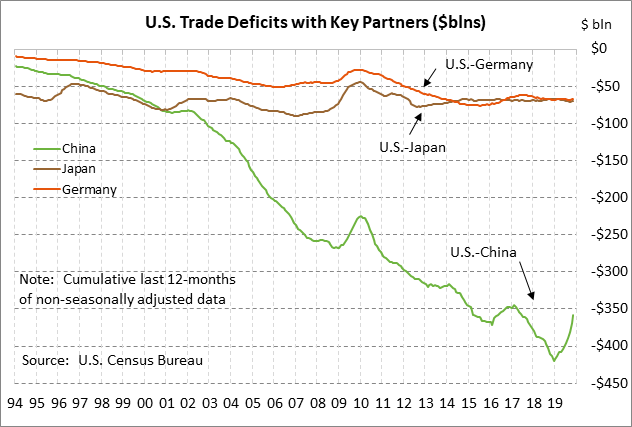
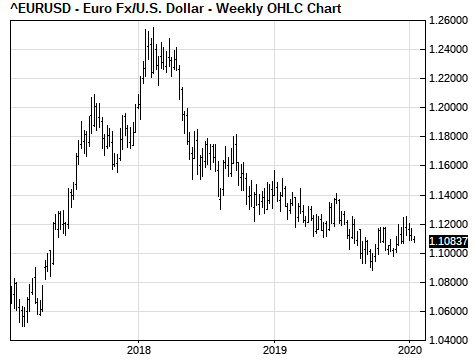
Wuhan virus sparks market reactions — The markets on Tuesday reacted negatively to news that the Wuhan virus that is spreading beyond China. People infected with the virus have already been found in Japan, Thailand, and South Korea. Moreover, the U.S. CDC on Tuesday announced the first case in the United States. A person in Washington state was found to be infected who had just been in China.
The good news is that the virus causes milder symptoms than previous new viruses such as SARS, and also appears to be less contagious on a human-to-human basis. In addition, the world’s health authorities are now better equipped to identify and contain such viral epidemics. Still, millions of Chinese are set to travel to far-flung places over the Lunar New Year holiday that begins on Friday.
Global stocks were undercut on Tuesday after health authorities confirmed human-to-human transmission and after the CDC announced the case in the United States. Those reports sparked fears of reduced consumer spending and economic growth in Asia if consumers panic and start to curb their activities, travel plans, and retail spending. In addition, industrial metals prices took a hit on Tuesday on concern about weaker global economic growth.
Bloomberg News cites studies as finding that the SARS epidemic 17 years ago cut Chinese economic growth by 0.8 percentage points in 2003 and cost the global economy about $40 billion. The current Wuhan virus does not appear to be nearly as bad as SARS, but the markets will nevertheless keep a watchful eye on the situation.
U.S. existing home sales expected to show a modest increase — The consensus is for today’s Dec existing home sales to show a +1.5% increase to 5.43 million, reversing most of Nov -1.7% decline to 5.35 million. U.S. home sales remain in generally strong shape at only 3% below August’s 1-3/4 year high and 5% below the 13-year high of 5.64 million units posted in Nov 2017. U.S. home sales are being held back by a tight supply of homes on the market, but are seeing support from low mortgage rates. The current 30-year mortgage rate of 3.65% is down by a massive -129 bp from the 9-year high of 4.94% posted in late-2018 and is within 16 bp of last September’s 3-1/4 year low of 3.49%.
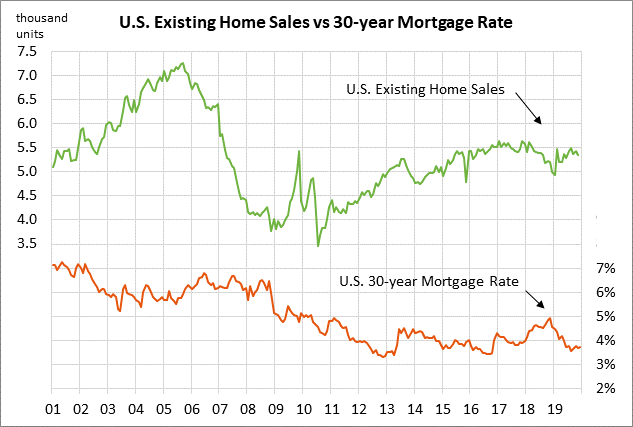
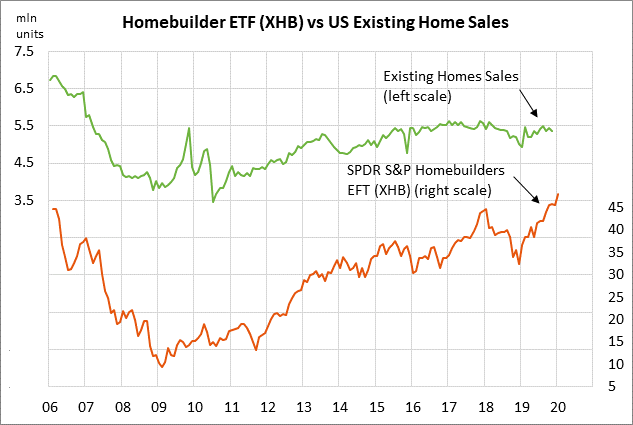
U.S. home prices expected to continue higher — The consensus is for today’s Nov FHFA house price index to show a +0.3% m/m increase, adding to Oct’s +0.2% increase. The FHFA index, which is the broadest measure of U.S. home prices, is in strong sharp and has risen by +5.0% y/y. The index has risen by a total of +57% from the housing-bust low posted in 2011.
